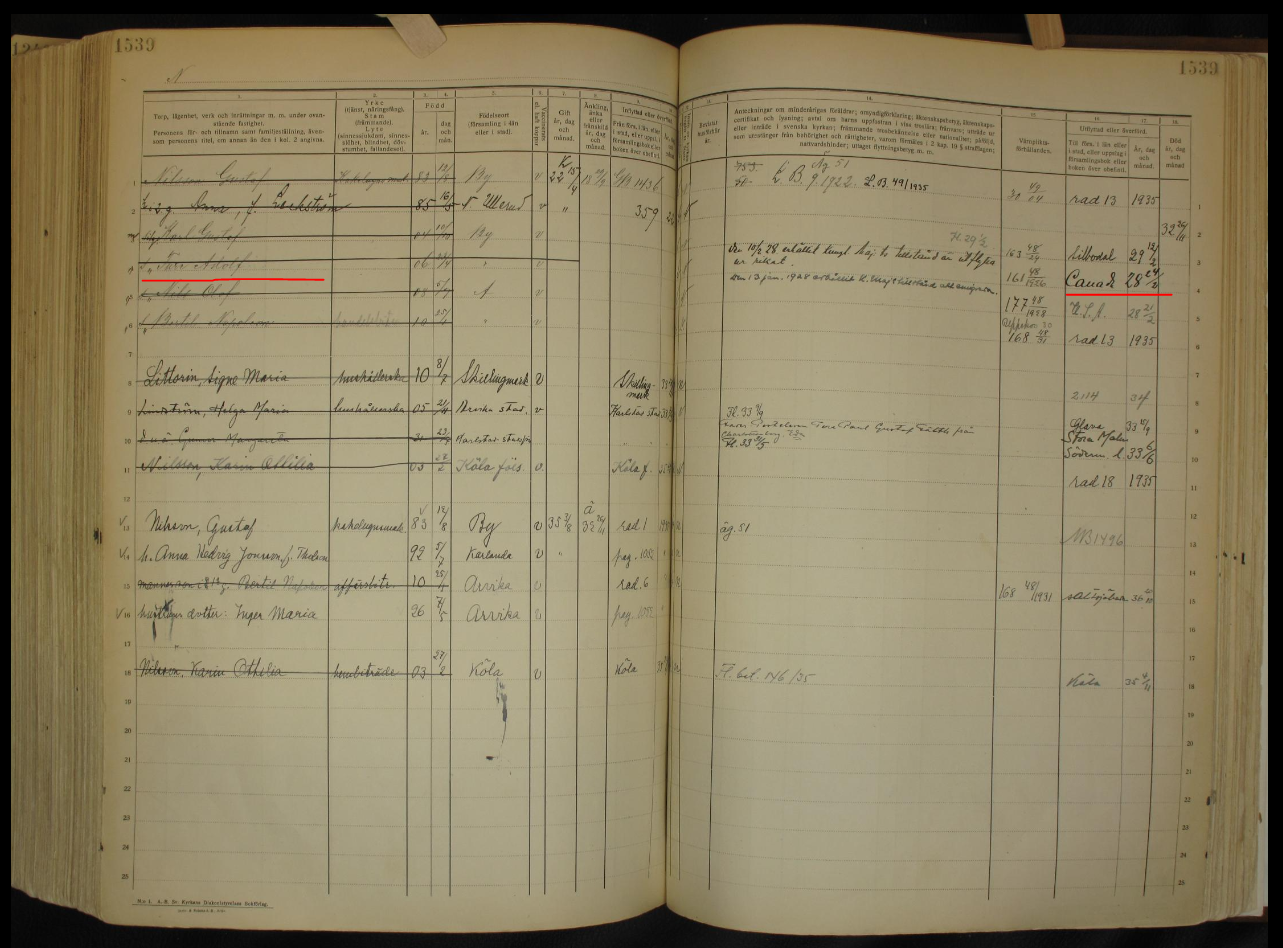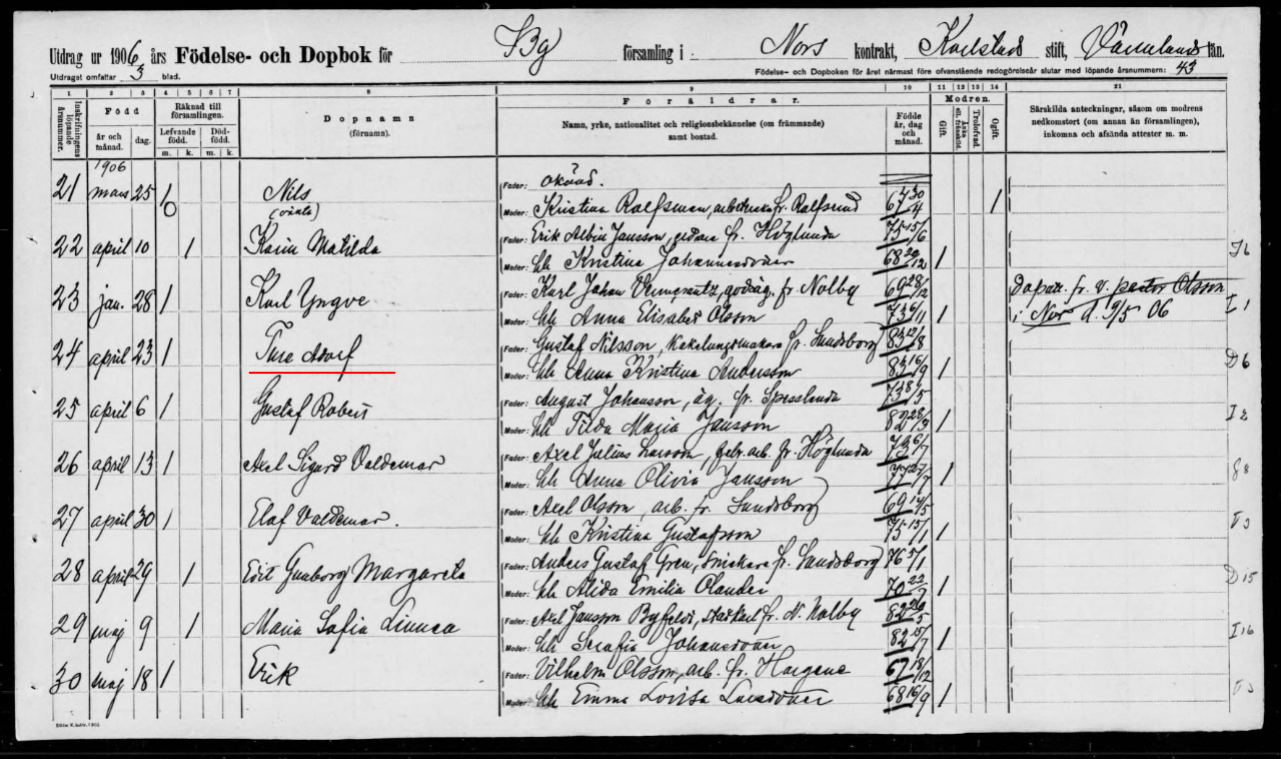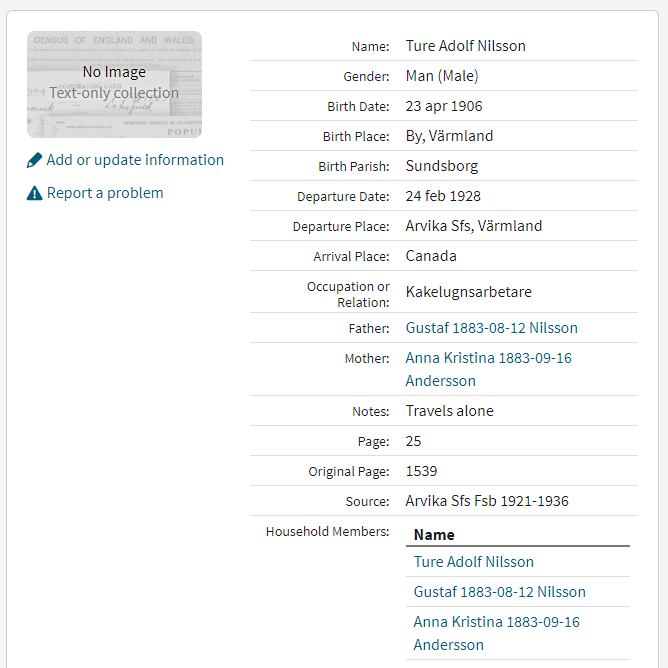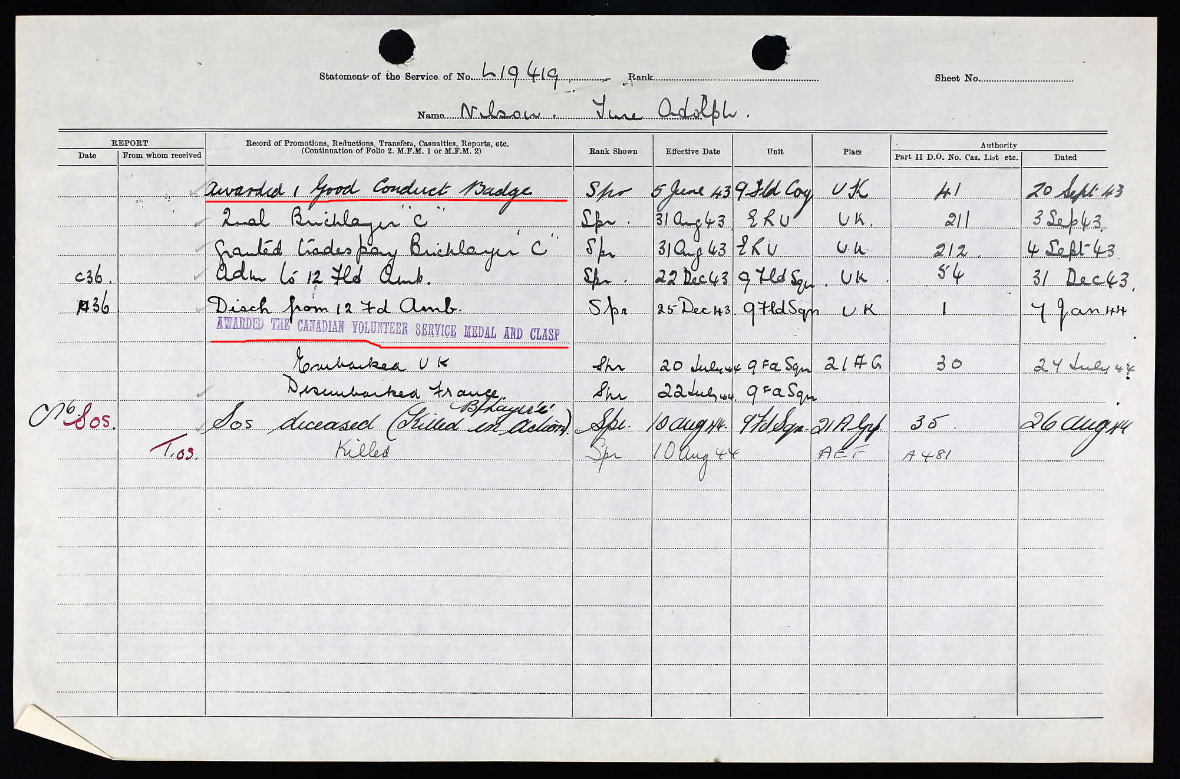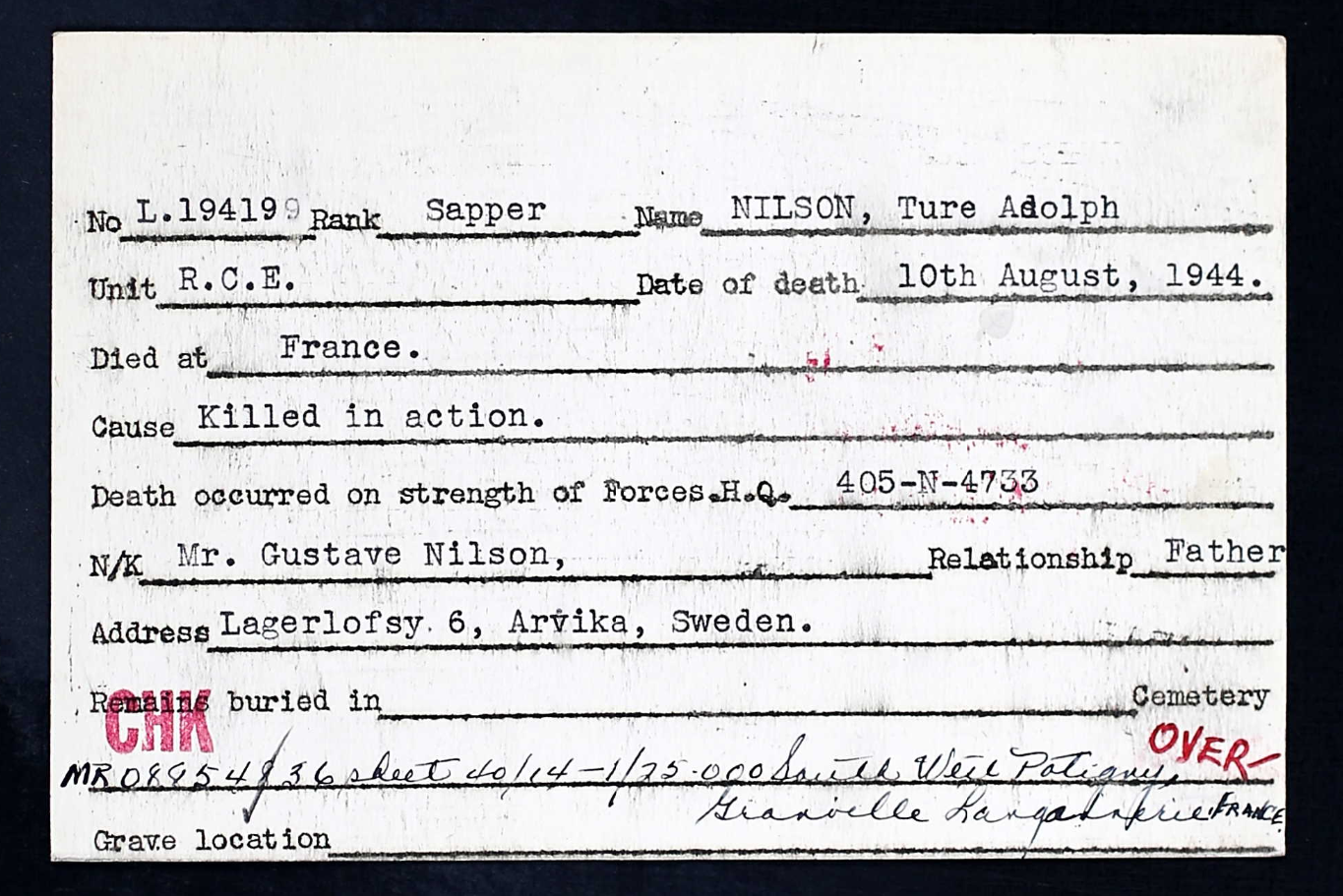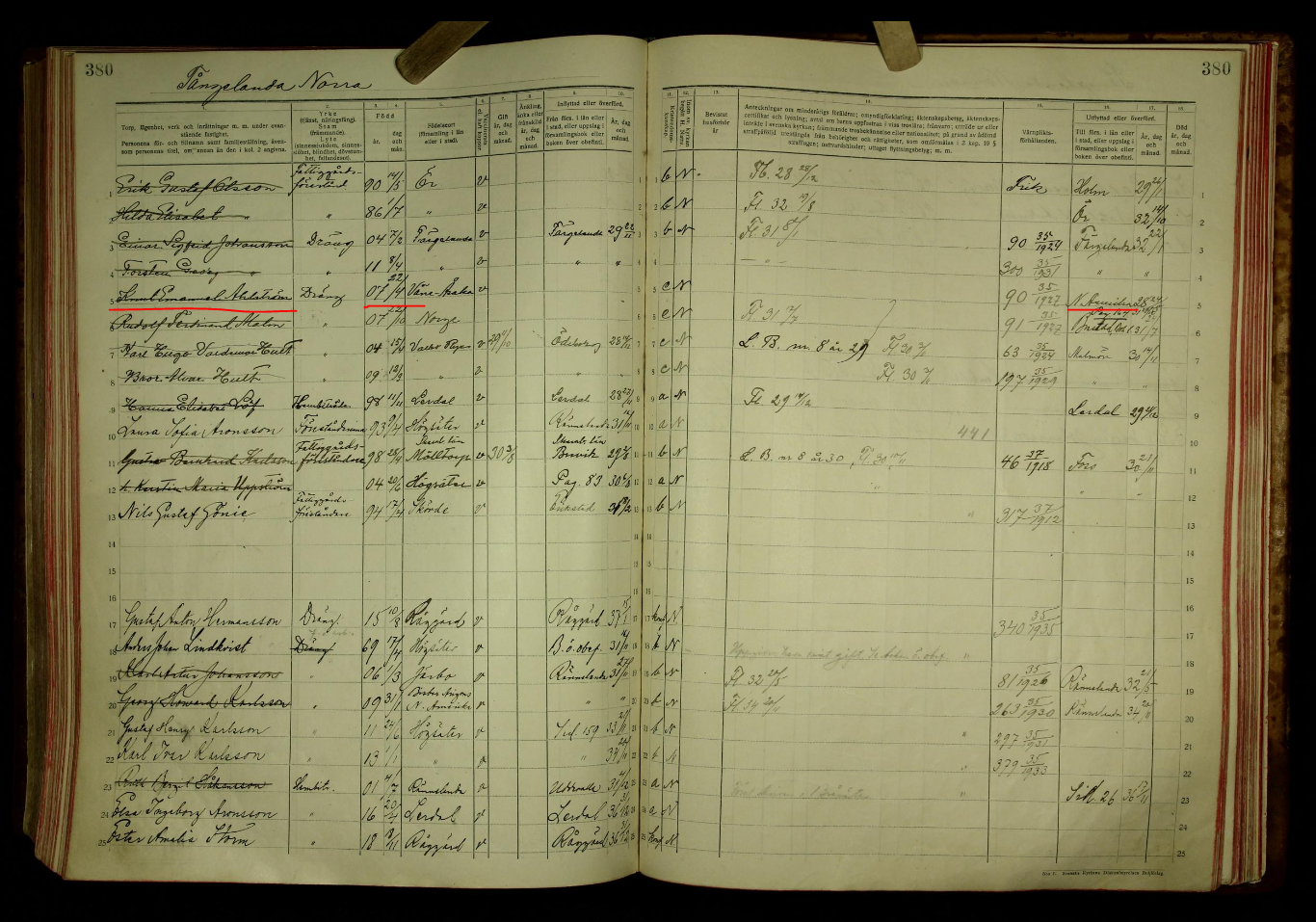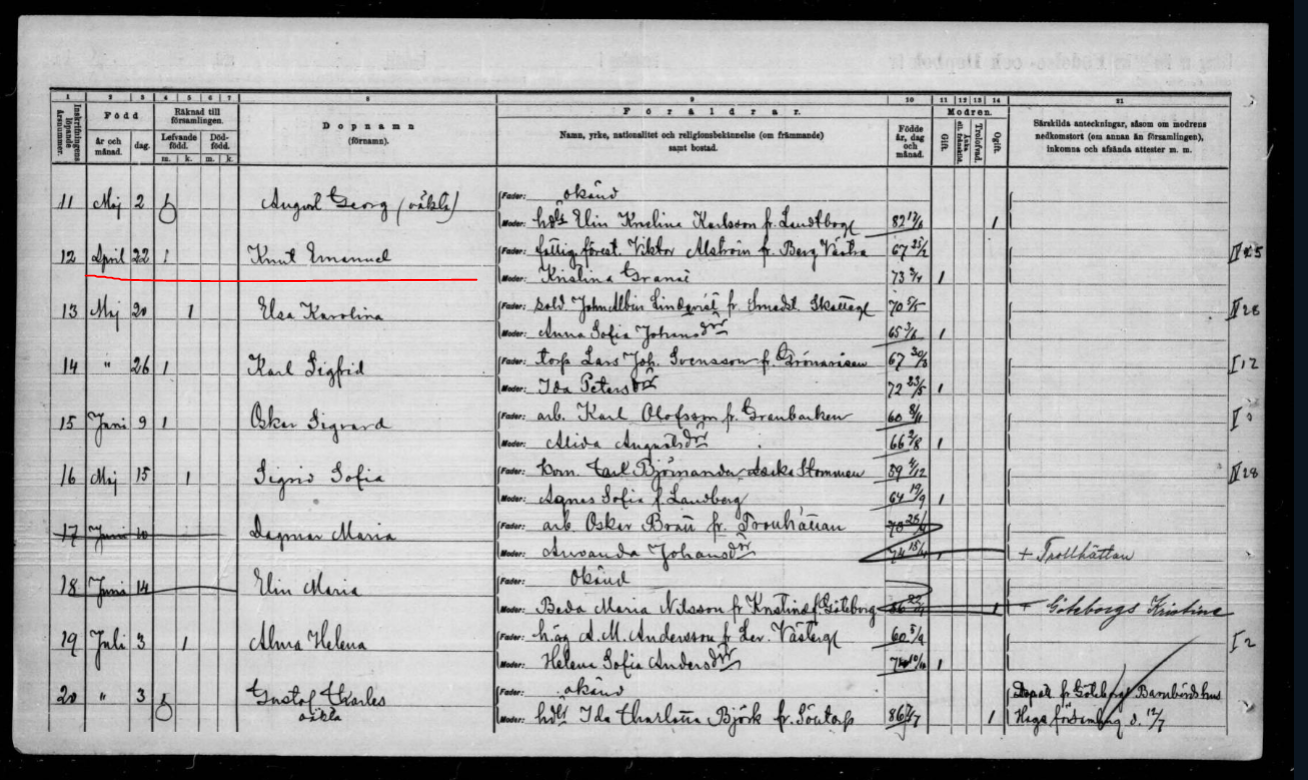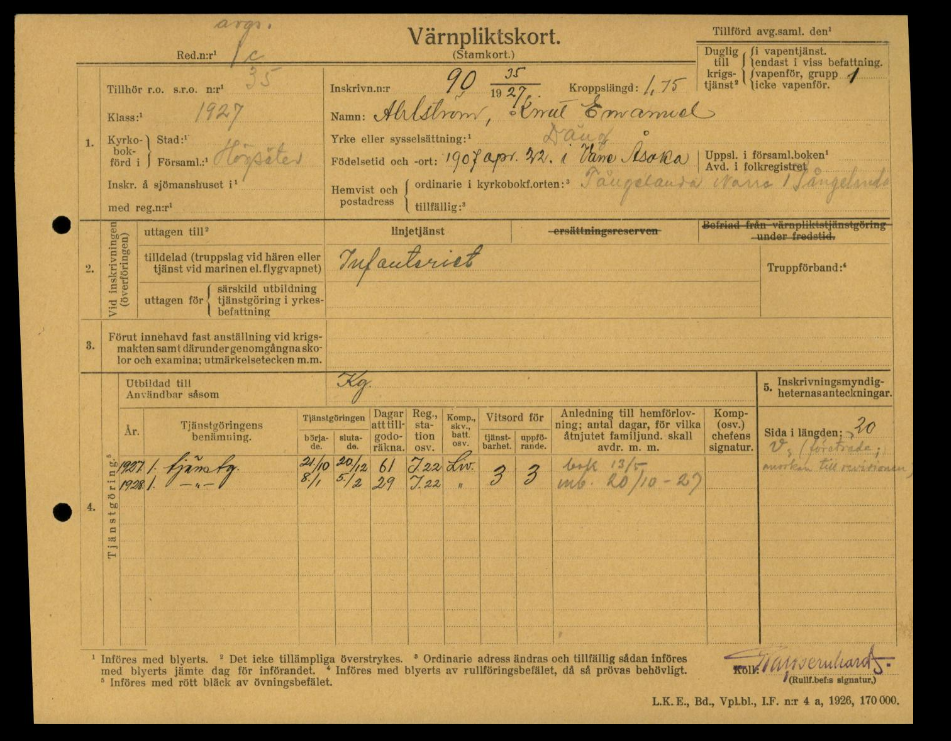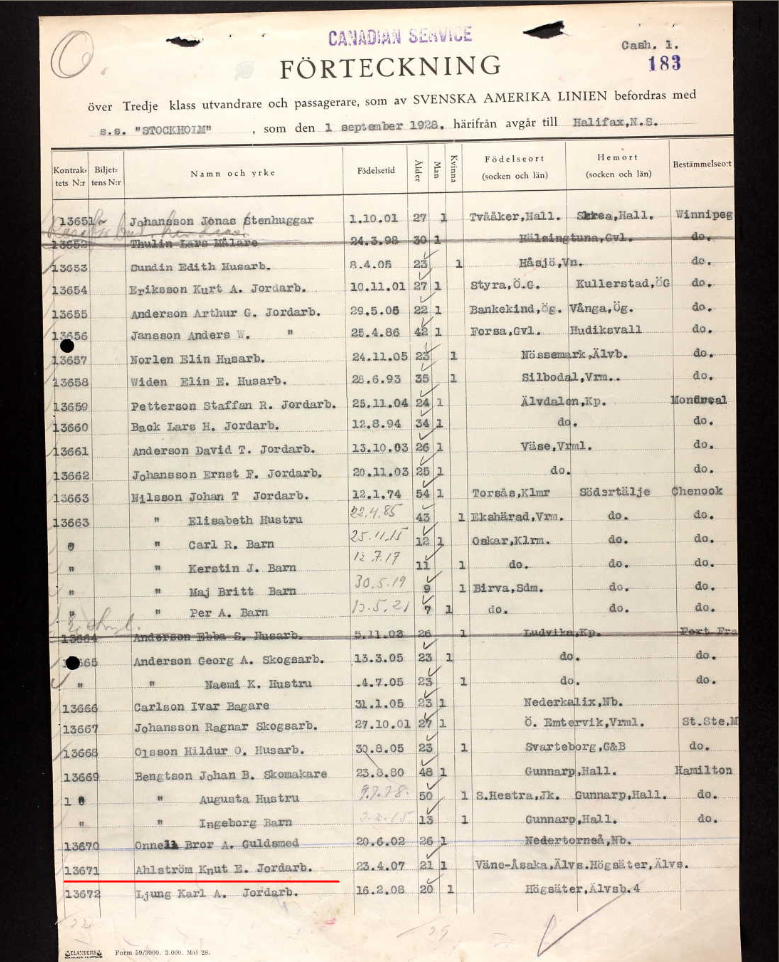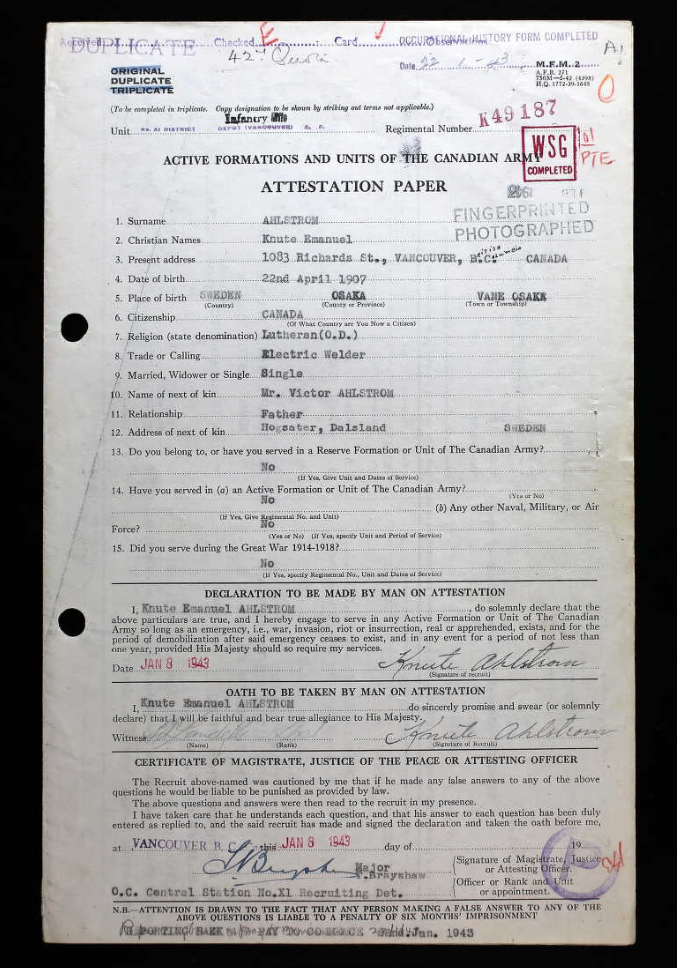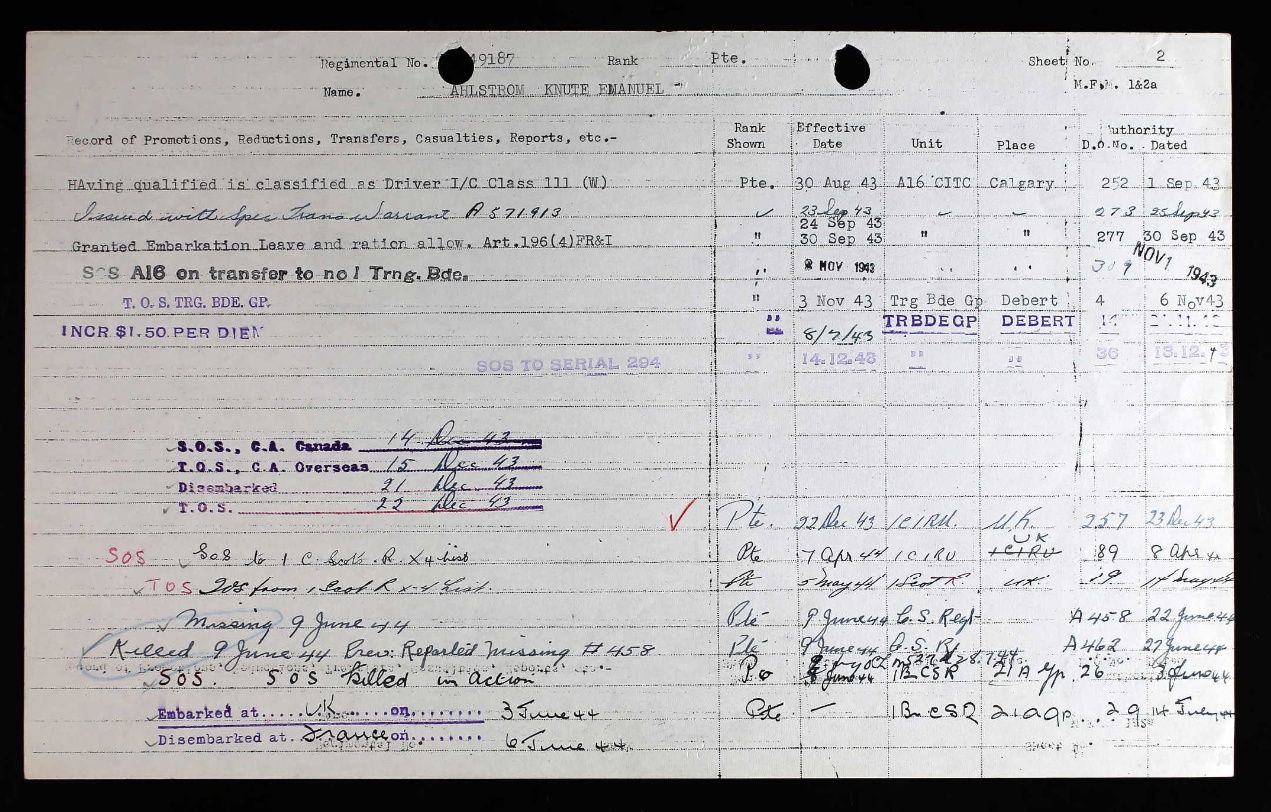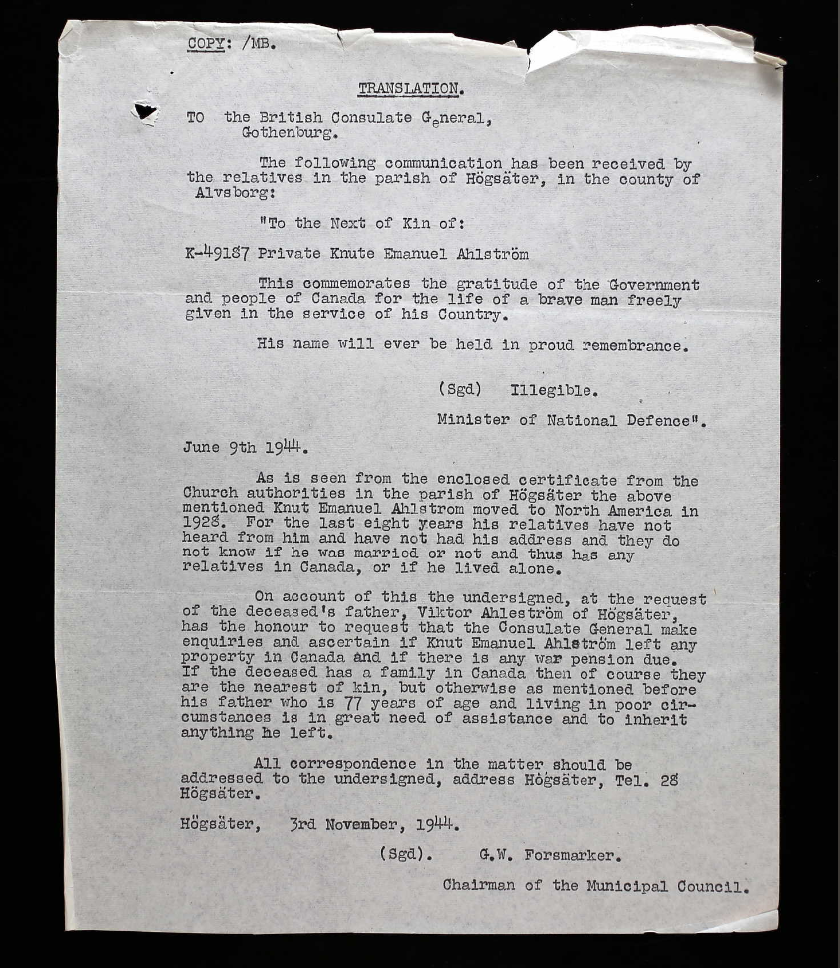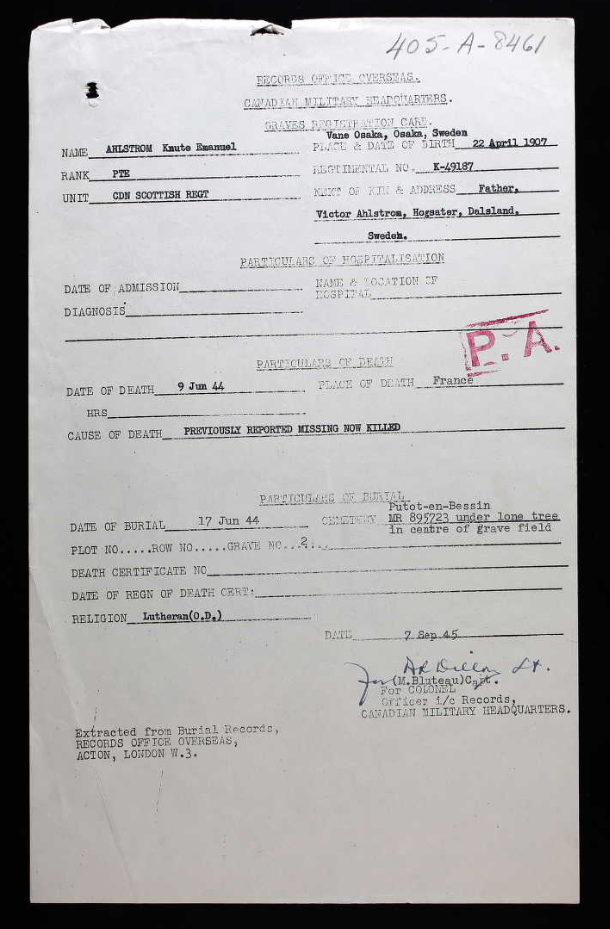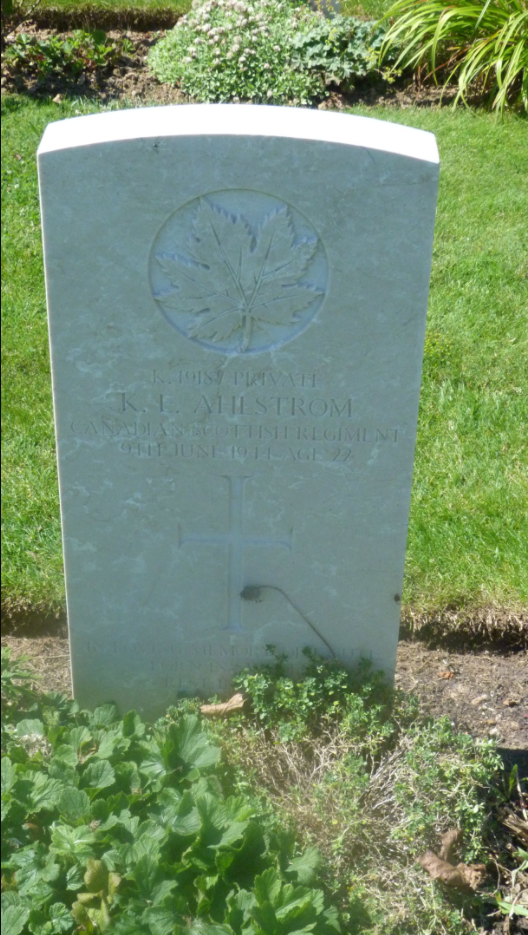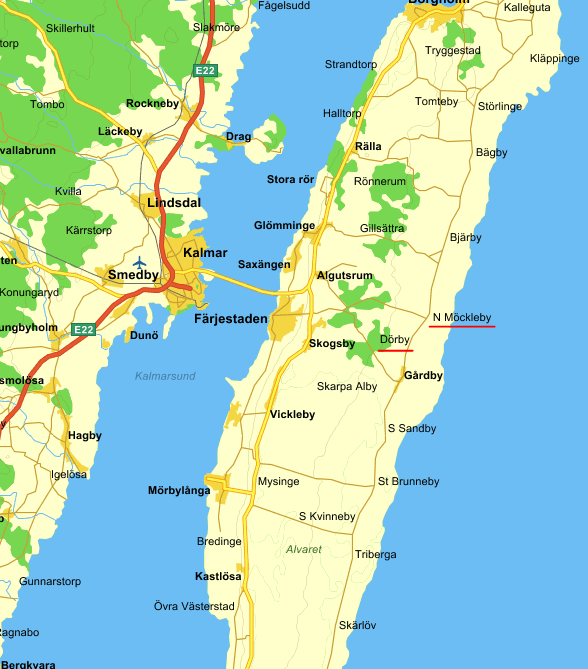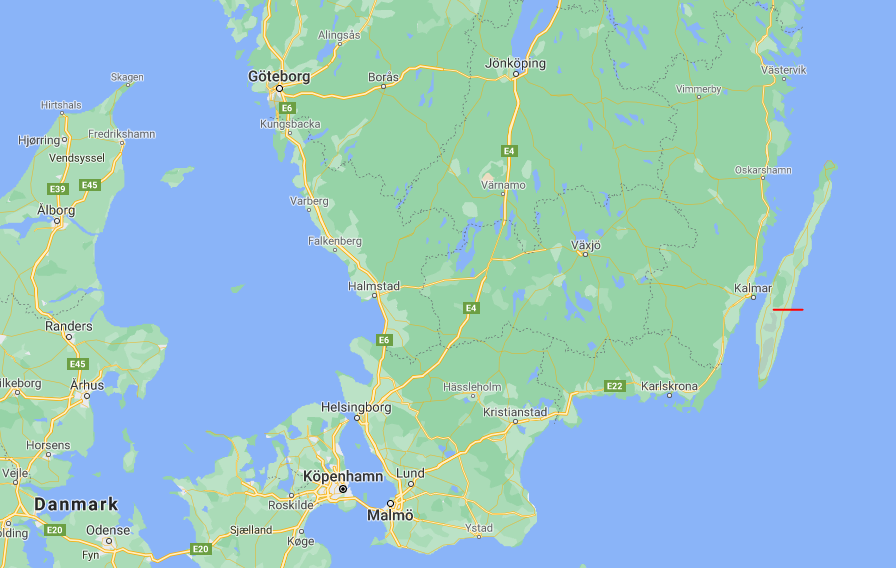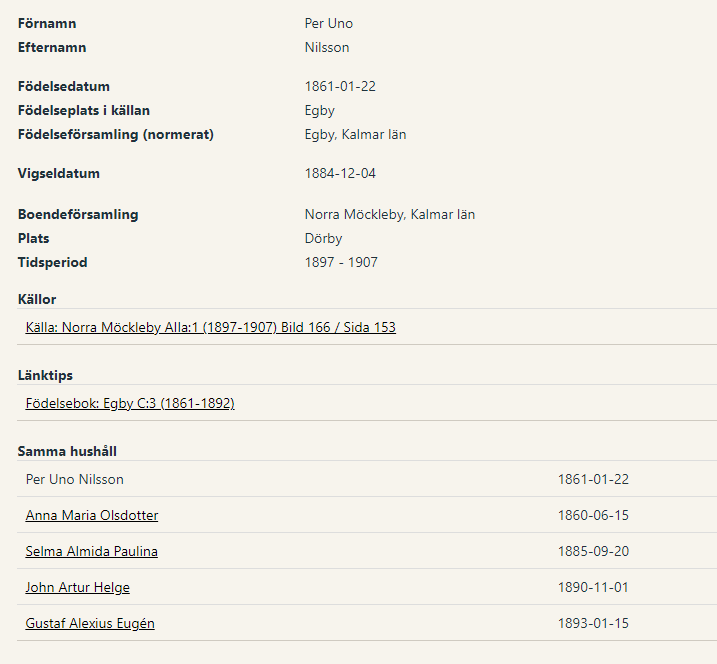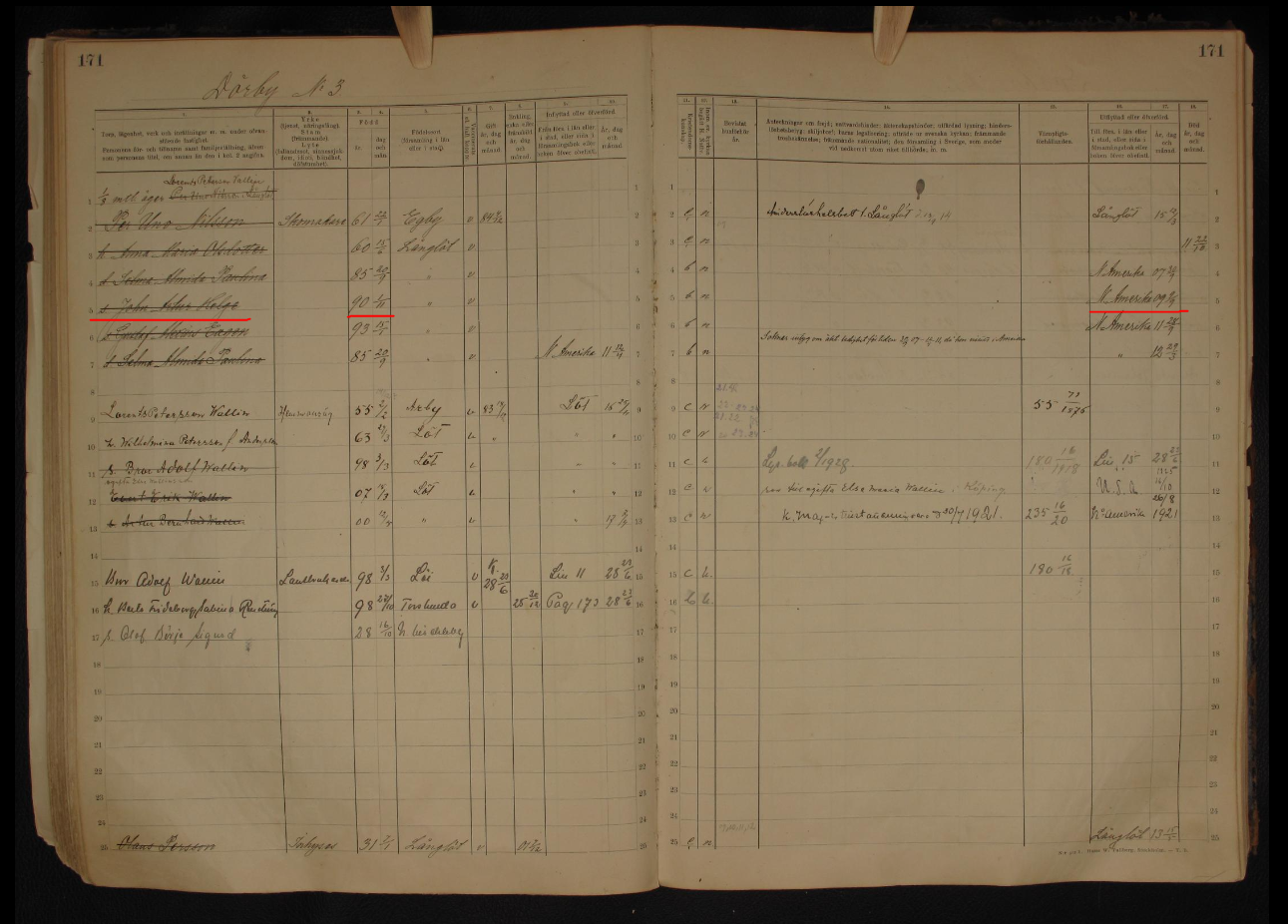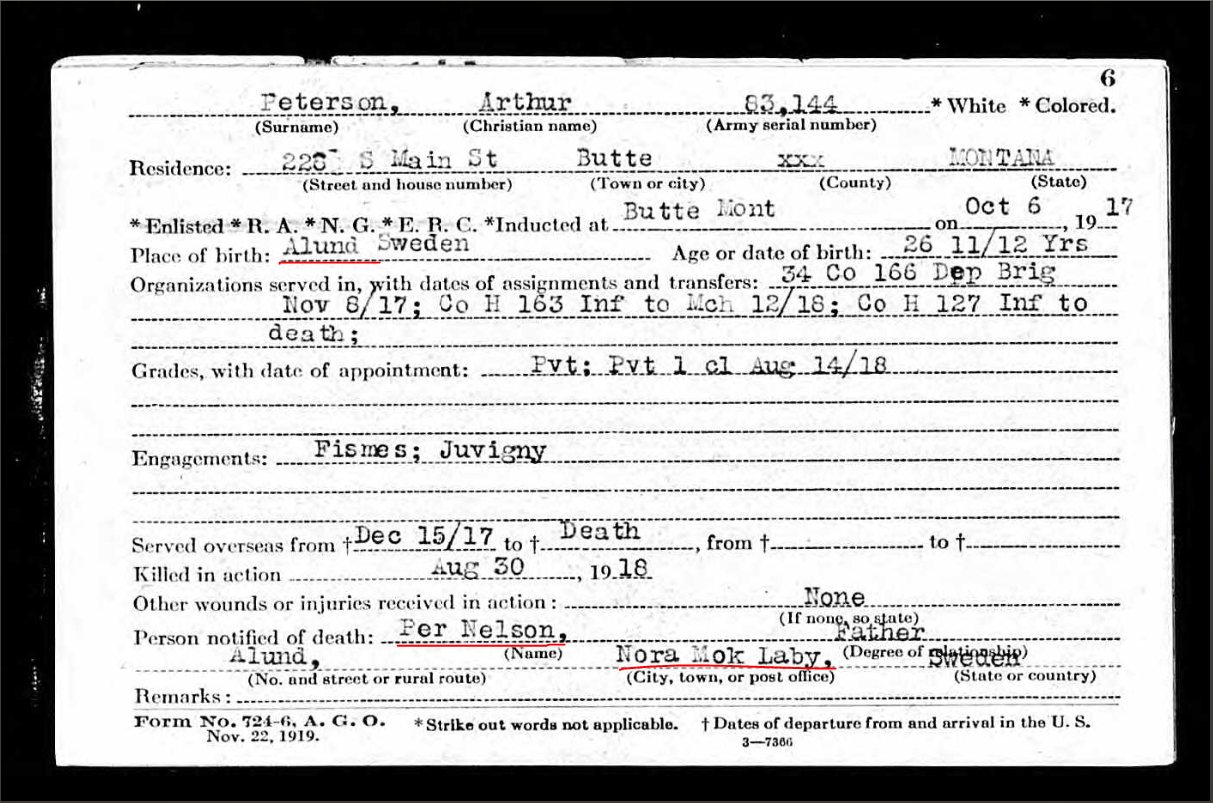During the week I got a ping from a follower on Twitter about a post from another user, that had a photo of a headstone in a cemetery in France that had a Epithaph in Swedish, and I was asked to translate it. It is not common to find stones with Swedish text in the cemeteries, and it is always interesting to follow up the names to see which relation they had to Sweden.
Normally, as you know, my research connected to this page is about Swedish born soldiers who fought and fell at the Western Front in the Great War, but I will also in the future look into those Swedes who fought and fell in the European Theatre in the second World War.
In this post I will look further into the picture of the Headstone of T A Nilsson, Ture Adolf Nilsson, who fought in the 9th canadian Field Section R.C.E, Royal Canadian Engineers, to see what facts it is behind it.
I managed to find out the story behind Ture. Here it is.
Ture Adolf was born in April 23, 1906 in, in By parish near the town of Säffle in the landscape of Värmland in Sweden. He was raised by his parents Anna Kristina Andersson and Gustaf Nilsson. He worked as a Mason and he did his conscript in Sweden in 1927, also as a Field Engineer. He was a Private, and made his basic training from April to September 1927 and he also managed to do some extra duty during late 1927.
The church book mention that he left Sweden for Canada in February in 1928, but right now I dont know the reason. He went alone to the big country in the West, as many of the Swedes did in the late 19th century, who became soldiers in the Canadian force during WW1. The reason for Ture may have been work or something else, I will try to look further into his life in Canada later on.
Ture Adolf registered for the Canadian Depot Unit in Saskatoon, and later on the 9th canadian engineer section, as I understand. He was active in his unit in UK during 1943, both as a bricklayer, but also some duty with the 12th Ambulance. He embarked in the UK in July 20 in 1944 and disembarked in July 22 in France. He was killed in action August 10th, 1944, probably near the area where he is buried, the area south of the village Caen in France, near the road between Caen and Falaise. The casualty card mention the village south of the cemetery, Grainville.
He was awarded the Good Conduct Badge during his time in the UK, and he also received the Canadian Volunteer Service Medal with clasp during the same period. But he also was noted for some Abcent without leave for almost 24 hours, I guess there were ups and downs …
He is buried at the Canadian military cemetery in Bretteville.
I decided to take another look in the CWGC database to see if there were other Swedish born soldiers who was noted in the database to be born in Sweden. I know there were a lot of Swedish soldiers who participated, but it is not always a note that they were born in Sweden, as I have experienced in my research for those who particpated in the Great War. I will definitely take a closer look at the Swedish related names.
Although I found another Swedish born soldier who was buried at the same cemetery as Ture Adolf, and here is the story about him.
Knute Emanuel Ahlstrom
Knute Emanuel Ahlstrom probably Knut E, as in Emanuel, which later became Knute in the documents, was born April 22, 1907, in Väne-Åsaka parish near Högsäter in the landscape of Dalsland, Sweden, and raised by his parents Kristina Granat and Victor Ahlström.
He worked as a farm boy and moved to Högsäter before he left Sweden for North America in August 1928. Also in this case I dont know the reason why he left, but will look further into that. He also did his conscript basic training in Sweden before he left, at the Swedish Infantry regiment I 22, from October 1927 to February 1928. He applied for emigration in May 1928, and it was granted by the Swedish Police authorities later in May, and he left Sweden in August 25, 1928.
Knut was registered for the Canadian Army in 1943, in the Canadian Scottish regiment. He disembarked and was taken on strength in the UK in December 1943.
Knut participated in the landings at the beaches in Normandie, Juno Beach, June 6th, 1944, and became Missing in Action around June 8th, and later on declared Killed in Action June 9th, 1944.
Knut was first buried in a field grave in Putot-En-Bessin area, northwest of Caen, before he was moved to the Canadian military cemetery in Bretteville.
This post just cover some basic information about two individuals who left Sweden for some reason, and joined the Canadian forces in World War 2, and for me it is important to enlighten those Swedes who participated in both the large Wars, and try to make them more than a name on a Headstone.
I will keep my main focus on those who fought in the Great War, but it is in a longer term quite natural to also commemorate those who fought in the second World War, but I will right now limit it to the area to the Western Front and the European Theatre. I have already found a third Swedish born individual who fought for the Canadians in WW2, but that will be another story.
May Ture Adolf and Knut Emanuel rest in peace.


